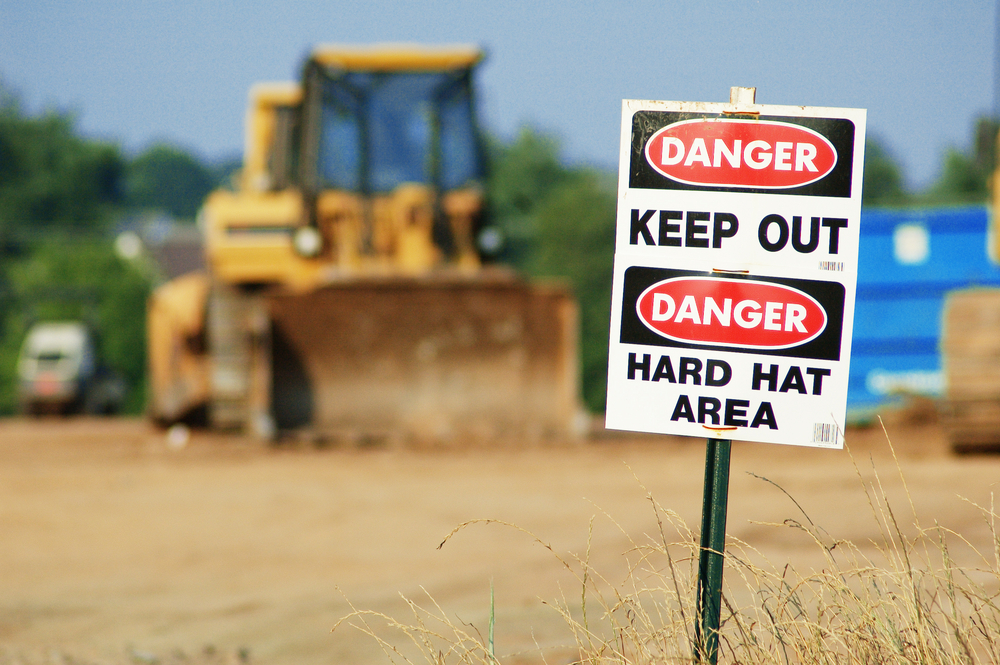OSHA Compliance Checklist: How To Meet Requirements

The workplace has shifted and evolved over the years, but one fact remains the same: Employee health and safety are vital for any industry. So, how are these essential elements enforced? That’s what the Occupational Safety and Health Administration (OSHA) was created to figure out.

The importance of OSHA can’t be overstated. In the approximately 50 years since the agency’s beginning, workplace deaths, injuries and illnesses have decreased dramatically. According to OSHA, about 13 employees died on-site daily in 2020 compared to the 38 deaths that occurred every day in 1970. On top of that, only 2.7 injuries occurred per every 100 employees in 2020 versus the 10.9 incidents per every 100 workers in 1972.
To ensure your company cares for and manages employees well, you must pay attention and adhere to OSHA compliance requirements. Learn more about OSHA’s response to workplace health and safety situations, conforming to OSHA standards and maintaining employee safety best practices.
How is Workplace Safety Ensured by OSHA?
To make workplaces safer, the United States Department of Labor wrote and passed the Occupational Safety and Health Act of 1970, creating the Occupational Safety and Health Administration. OSHA’s role is to set and enforce protective workplace safety and health standards, as well as educate employees and employers on training best practices and providing other helpful information.
OSHA broadly covers most private sector employees in all 50 states, the District of Columbia and other U.S. jurisdictions either directly or through approved state-run programs. Self-employed workers, farm employers and other workers whose regulations are set by different federal agencies aren’t required to meet OSHA compliance.
Before creating your OSHA compliance checklist, it’s best to fully comprehend what being OSHA compliant truly means: following all the OSHA regulations, completing the necessary training and any other essential components specific to your industry. Take a closer look at how to maintain OSHA compliance at your workplace, both as an employer and employee.
How To Meet OSHA Compliance
OSHA standards require regulations to be followed for various industries, including agriculture, construction, healthcare, manufacturing and transportation, to name a few. But, there are foundational compliance rules every employer, regardless of their sector, must follow. Some of these key responsibilities include:
- Providing a workplace free from serious recognized hazards and complying with standards, rules and regulations issued under the OSHA act.
- Looking at workplace conditions and ensuring they’re safe, clean and well-managed.
- No matter the industry, making sure employees have and use safe tools and well-maintained equipment.
- Using the hazard communication standard to indicate potential hazards with color codes, posters and labels to warn employees of chemicals or dangerous goods.
- Always communicating rules and expectations with employees and ensuring everyone understands and follows OSHA requirements.
- Supplying employees with proper training in a language and vocabulary they can understand.
- Keeping records of work-related industries and illnesses, unless you operate a business with 10 or fewer employees.
These OSHA requirements summarize some of the necessary steps employers must take daily to ensure all employees have access to information and are kept safe. For employees, there are specific rights that must be observed to ensure you have a workplace free of known health and safety hazards. Those rights let you:
- Receive workplace safety and health training in a language you understand.
- Work on safe machines.
- Receive required safety equipment like gloves or a harness and lifeline for falls.
- Be protected from toxic chemicals.
- Report an injury or illness, and get copies of your medical records.
- Review records of work-related injuries and illnesses.
- See workplace hazards test results.
- Request an OSHA inspection, and speak to the inspector.
OSHA Inspections
To ensure businesses are following the necessary rules, the agency uses an OSHA inspector to check in either by phone or on-site. A safety inspection is crucial for addressing workplace safety and health concerns, as well as holding employers and businesses responsible for any issues that may arise. An OSHA inspection occurs for seven different reasons, with some being more urgent than others.
- Imminent danger situations: Any hazards that could cause death or serious physical harm receive top priority from inspectors. Compliance officers will ask employers to correct these hazards immediately or ensure employees are removed from danger.
- Severe injuries and illnesses: Employers must report all work-related fatalities, hospitalizations, amputations or losses of an eye quickly.
- Worker complaints: When an employee contacts OSHA and requests an inspection because of potential violations or hazards, these issues are always taken seriously. Employees may request for their identities to be kept anonymous when they file complaints.
- Referrals: If other federal, state or local agencies, individuals, organizations or media suspect a hazardous environment, they can report that company for an inspection.
- Targeted inspections: Industries that are high-risk or have previous injuries and illnesses are given priority for inspections.
- Follow-up inspections: Inspectors can check back with companies to ensure the previous violation has been corrected.
There are grounds for inspection and regulations, and employers must adhere to these compliance requirements to avoid large fines. According to the Department of Labor, any employer who violates the guidelines may be charged a fee of no more than $70,000, but no less than $5,000 for each offense.

What To Include in Your OSHA Compliance Checklist
To avoid getting fined and to keep their employees healthy and safe, employers should create an OSHA inspection checklist to self-assess their company and make sure all requirements are being met. Here’s what you should include on your checklist:
- Check your working environment’s cleanliness: All toilets, washing facilities and general work areas should be sanitary and dry.
- Ensure administrative, recordkeeping, posting and reporting requirements are done: Many documents and records need to be tracked and made available to employees, and signs with job safety measures must be hung up on-site.
- Have an employee health and safety program: Implement a plan to ensure compliance and assign an individual or group the responsibility of maintaining it.
- Keep surfaces walkable: Prevent slips, trips and falls by keeping floors and stairs dry and clean.
- Confirm that a medical and first aid kit are available: Make sure you have a fully stocked and easily accessible care kit.
- Examine your company’s electrical equipment and wiring: Some standards cover electrical systems designs and practices, so check that your electricity meets these requirements.
- Communicate hazardous materials: If your industry deals with dangerous goods, display necessary signage at the workplace. For shipping hazardous materials, ensure you’re using the proper safety data sheets.
- Give all employees protective equipment: Ensure every employee has the necessary personal protective equipment like face masks, eyewear, visors, gowns, etc.
- Inform employees of the plan in case of a fire: Fire prevention measures must be implemented in the workplace, and exit routes must be known and kept unobstructed at all times.
Avoiding Hazards: Employee Safety Best Practices
The best way to protect your employees and remain OSHA compliant is to properly train and educate the people at your company. Make certain people are aware of the potential dangers of the industry, and rehearse safety procedures regularly.
Online, video-based safety and health training can boost understanding and decrease accidents at your business. This modern approach means employee education can be done at any time and place, whether your employees are working internationally, locally, remotely or in person.
Browse through several OSHA-specific courses to learn more about employee health and safety. Ensure every person gets the same, consistent OSHA training with MasteryTCN.
You made a good point that keeping surfaces walkable is essential when it comes to complying to OSHA standards. I’d like to find a good construction OSHA training service someday because I can imagine how that will be necessary for a retail business. OSHA compliance will surely come up when it comes to warehouse storage.